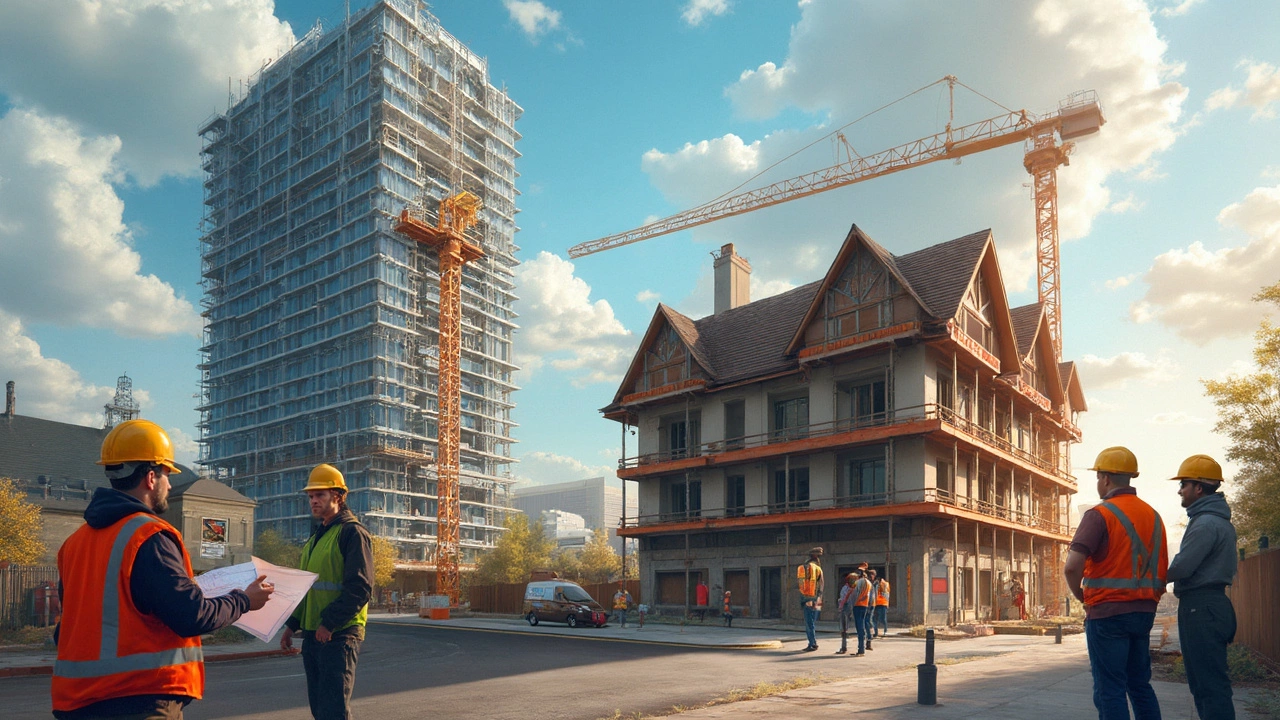Building Classification – Your Quick Guide to Building Types
Ever wondered why a warehouse, a school and a home all follow different rules? It’s all about building classification. The classification tells architects, builders and inspectors what standards apply, from fire safety to structural loads. Knowing the class of your project helps you avoid costly mistakes and keeps everything legal.
In the UK, the most common classes are A (dwelling), B (business), C (industrial), D (storage) and S (special). Each class has sub‑categories that drill down into specifics, like A1 for hotels or B1 for offices. The class you pick decides the requirements for fire resistance, ventilation, and even the kind of flooring you can use.
How Classification Affects Your Project
First off, the class determines the building regulations you must meet. If you’re converting a garage into a living space, you move from a D‑class (storage) to an A‑class (dwelling). That shift triggers a whole new set of rules for insulation, stair dimensions, and emergency exits.
Second, classification influences your choice of materials. For a B‑class office, lightweight partition walls and acoustic ceilings work well. In a C‑class factory, you’ll need tougher floor finishes that can take heavy machinery. Articles like “Understanding Construction Materials: Types, Uses, and Essential Facts” give you a solid base for picking the right stuff.
Common Questions and Practical Tips
What if you’re not sure which class fits your build? Start by looking at the building’s intended use. If people will live there, it’s A‑class. If it’s for retail, it’s B‑class. Mixed‑use developments often combine classes, so you’ll need to split the project into zones and apply the rules to each zone.
Don’t forget about health and safety. Posts like “Can You Get Sick from Building Mold? Health Risks, Signs, and Solutions” show why proper classification matters for indoor air quality. A mis‑classified building might skip essential damp‑proofing, leading to mold problems later.
Foundation and structural concerns also hinge on classification. A high‑rise office (B‑class) faces different load demands than a single‑family home (A‑class). For deep‑dive guidance, see “Foundation Problems: Proven Solutions for Long‑Lasting Home Stability” and “Major Foundation Issues: Recognizing Structural Damage Signs and Solutions.”
Finally, always check local planning permission. The council will ask for the building’s classification before approving any plans. Having the right paperwork saves time and prevents costly redesigns.
Bottom line: understanding building classification isn’t just bureaucratic red tape – it’s the roadmap that keeps your project safe, legal, and on budget. Use this guide as a starting point, then explore the related articles on mold, foundations, material choices and more to get a full picture of what your specific project needs.
What Makes a Building Commercial? Key Features That Define Commercial Properties
- Gavin Whitaker
- |
- |
- 0
A building becomes commercial not by how it looks, but by how it's used - for profit-driven activities like retail, offices, or hospitality. Zoning, building codes, and insurance all change when a space crosses from residential to commercial use.
View moreCommercial Structure Types: What Construction Means for Your Business
- Gavin Whitaker
- |
- |
- 0
Choosing the type of construction for a commercial structure is more than just picking out materials—it's about meeting safety codes, insurance guidelines, and long-term cost concerns. This article breaks down commercial construction types, from steel to wood frames and beyond. You'll see why the materials and methods matter for everything from fire safety to how much you pay for coverage. Find out how to tell what type your building is—and what that means for your next project.
View moreWhat Is Classified as Commercial? Commercial Construction Explained
- Gavin Whitaker
- |
- |
- 0
This article breaks down what counts as commercial in the construction industry. It highlights the types of properties classified as commercial, the rules that shape these buildings, and how they differ from residential spaces. You'll also get tips about zoning, building codes, and placement of mixed-use properties. With straightforward examples and practical advice, you'll know exactly where the commercial line is drawn.
View more

